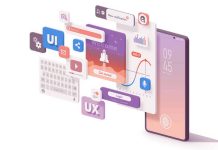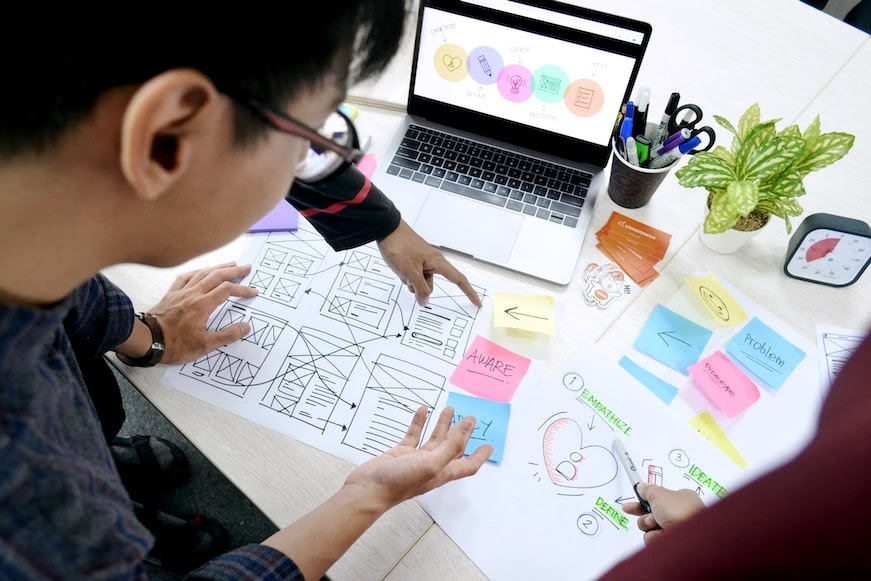Technology in mobile phones has reached a new age of development. The evolution from the handy devices to flips and later touchscreens. The recent addition to the family of smartphones is a foldable mobile phone. Although many do not consider it a new concept just an innovation of past ideas, technology is always new. These foldable devices include flexible display technology that incorporates electronic visual presentation.
Recent years have witnessed the fact that consumers are showing interest in flexible display options. Things got even better when a big brand like Samsung brought its foldable devices to the market in 2019. And now even Apple is all set to join the bandwagon. So now that these cult favorites are coming up with their own devices, we can only expect this trend to rise higher.
How are Foldable Mobile Phones Helpful?
Foldable devices work on flexible OLED display technology. This is way thinner than the usual mobile phone screen panels thus making mobile phones and smartwatches thinner. Let’s take a look at some of the advantages of these foldable devices.
1. Greater Flexibility & Space
Foldable devices have given developers a few new and innovative app ideas. Firstly as these are intended to have more space, developers can now create great apps giving qualitative experiences for all the diverse forms of multi-window.
For instance, the banking apps on these phones can show additional information on the multi-window app screen. Besides that, video streaming apps can fully utilize the amplified screen size. Developing a mobile app for this kind of device also gives developers and users a better visual appeal. These few points give foldable devices a great advantage over single-screen smartphones.
2. Ability to Multitask
One of the most common advantages of foldable devices is multitasking. These phones come with several alignments and aspect ratios and have a higher quality expectation as compared to other types of smartphones.
Since users have been using single-screen devices up till now, foldable mobile phones have increased their expectation levels for a hassle-free app flow. Foldable phones have taken multitasking to another level. The apps will now be more detailed due to amplified screen spaces. Son now the users can run more than one app at the same time.
3. Road to Better App Designs
The last but not the least advantage of a foldable device is that it will open the door to better app designs. But improving apps for foldable devices would require a lot of design, development, and testing. As the main idea of these phones is to put together a mobile phone and a tablet into a single framework. So we can only imagine the new designs that can be introduced for these devices.
How to Develop an App for Foldable Mobile Phone

The foldable devices have their own challenges. Developers now have to build apps as per screen sizes and the user experience of the application. But in order to create apps that can adapt to multiple screen sizes and configurations, the developers are required to have a clear picture in mind. Here are 5 main steps of app development for foldable devices.
1. Know the Device Design
Firstly, it is essential to understand the device design. There are two states in every foldable smartphone, the primary or unfolded screen, and the cover or folded screen. The primary state transforms the device into a tablet to give the users an amplified viewing experience. On the other hand, the foldable state acts like a mobile phone that is operated in a conventional way.
New to the design world? Our app design company can help you turn your ideas into an emerging reality.
2. App Development
The app development in these smartphones calls for modifications in the configuration system. There is an additional feature, which automates the resizing of the apps that do not support multi-window. When the changes take place in the configuration, the default case puts an end to the entire activity and further recreates itself.
Looking to develop a mobile app for foldable devices? Our digital product development company can help you build an immersive mobile app.
3. Multi-display Screens
The apps in these devices will be running on both display screens. This mandates adding a resource folder to show high-quality content. As the developers create a mobile app for foldable devices, it’s essential that they maintain the specifically required screen space for apps.
4. Testing Apps
It won’t be an exaggeration to say that people using foldable smartphones would expect that the apps on the devices should function properly. A slow app will not be of any interest to the users. This is the reason that rigorous testing of apps, after development, on a foldable device is essential. It can be done by running a foldable emulator too.
Conclusion
Developing apps for foldable devices can be challenging. You have to make sure that the development team building a mobile app for foldable smartphones should be up to date with all the latest technical skillsets. Also, new technologies should be integrated into the working modules for developing faster and more innovative foldable mobile apps. After all, foldable smartphones are the trend to rule the digital world in the coming years.









